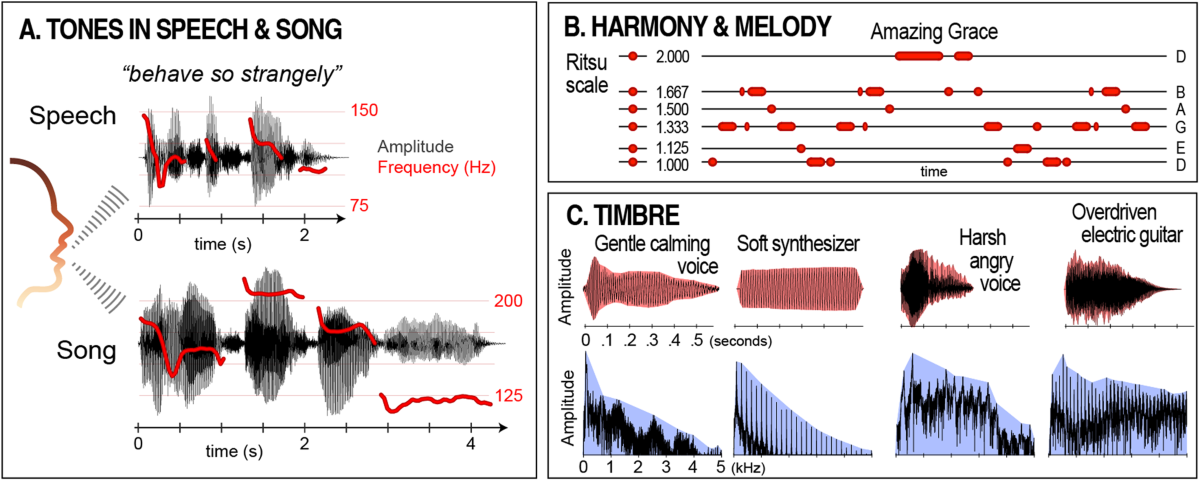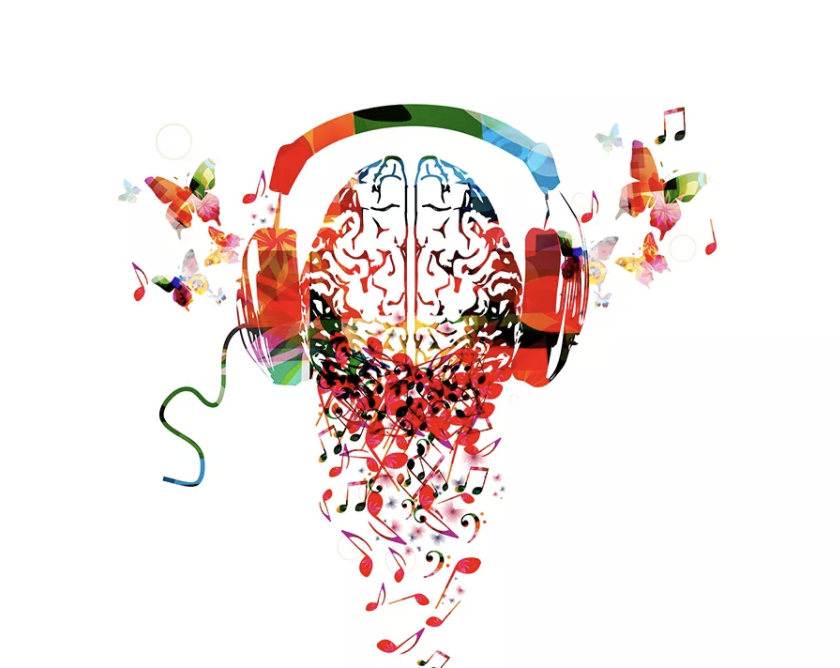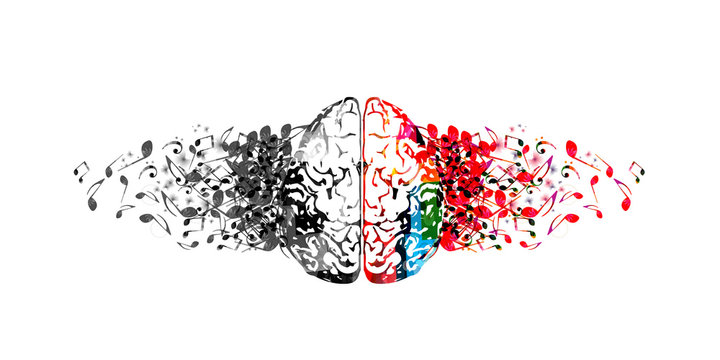
The Transformative Power of Music: Enhancing Life Through Harmony
1. Introduction
The Universality of Music
Music is a fundamental aspect of human experience, transcending geographical, cultural, and historical boundaries. From the rhythmic drumming of indigenous tribes to the complex symphonies of classical composers, music weaves through the fabric of human existence, resonating with individuals across time and space. It serves as a universal language, expressing emotions, narrating stories, and reflecting cultural values.
In every corner of the globe, music holds a special place in rituals, celebrations, and daily life. In African cultures, drumming and dance are integral to communal events and spiritual practices. In Asia, traditional instruments and vocal techniques convey deep philosophical and religious meanings. Western classical music, with its intricate compositions, has been a cornerstone of cultural and intellectual heritage. Even in contemporary settings, popular music genres continue to shape and reflect societal trends and personal experiences.
This pervasive presence of music across diverse cultures and epochs underscores its profound impact on human life. It is not merely a form of entertainment but a vital component of our emotional and social fabric.
Purpose of the Article
The purpose of this article is to delve into the transformative power of music by exploring the fundamentals of music theory and illustrating how its principles can enrich our daily lives. By understanding the basic elements of music—such as pitch, rhythm, melody, harmony, dynamics, timbre, form, and tempo—we can harness its potential to improve our well-being, productivity, and overall quality of life.
Music theory, while often associated with formal education and professional practice, offers valuable insights that can be applied in everyday contexts. Whether it’s using rhythm to structure our routines, melody to lift our spirits, or harmony to create a balanced environment, the concepts of music theory provide practical tools for personal development.
This article aims to encourage readers to incorporate music into their lives with intention and awareness. By appreciating and applying these musical principles, individuals can experience enhanced emotional regulation, increased cognitive function, and a more harmonious existence. As we explore these concepts in depth, we invite you to consider how music can be more than just a background element in your life—it can be a powerful ally in your journey toward a more fulfilling and balanced life.

2. Basic Music Theory: The Building Blocks
Pitch
Definition and Significance of Pitch in Creating Melodies
Pitch refers to the perceived frequency of a sound, which determines how high or low it sounds. In music, pitch is fundamental in constructing melodies, as it defines the notes that form a tune. A melody is a sequence of pitches that are perceived as a cohesive line, and it is often the most memorable part of a musical piece.
Examples of How Different Pitches Evoke Various Emotions
- High Pitches: Often associated with feelings of joy, excitement, or tension. For example, the high notes in a lively pop song can create a sense of exhilaration.
- Low Pitches: Typically convey feelings of calmness, seriousness, or melancholy. A deep, resonant bass note in a classical piece might evoke a sense of gravity or contemplation.
Understanding pitch allows us to use music to influence our emotional state and enhance our experiences.
Rhythm
Importance of Rhythm in Structuring Music and Life
Rhythm is the pattern of beats or time in music, defining how sounds are organized and spaced. It provides structure and helps to create a sense of movement and progression within a piece. In daily life, rhythm can be instrumental in establishing routines and managing time effectively.
How Rhythmic Patterns Can Improve Time Management and Productivity
- Daily Routines: Implementing rhythmic patterns into your schedule, such as setting specific times for tasks and breaks, can improve productivity and reduce procrastination.
- Workflows: Using rhythmic music with a steady beat can help maintain focus and enhance efficiency during repetitive tasks.
By adopting rhythmic principles, you can bring more organization and efficiency into your life.
Melody
The Role of Melody in Conveying Messages and Emotions
A melody is a series of pitches arranged in a specific sequence to create a recognizable tune. It is often the most direct means of emotional expression in music. Melodies can tell stories, express feelings, and evoke memories.
Examples of Memorable Melodies and Their Impact on Mood
- “Happy Birthday”: A simple yet memorable melody that evokes celebration and joy.
- Beethoven’s “Ode to Joy”: This uplifting melody is often associated with feelings of triumph and euphoria.
By understanding and using melodies, you can enhance your mood and communicate effectively through music.
Harmony
How Harmony Supports and Enhances Melodies
Harmony involves combining different pitches played or sung simultaneously to support and enrich a melody. It adds depth and complexity, creating a fuller and more engaging musical experience.
The Concept of Harmony in Creating a Balanced and Fulfilling Life
- Personal Relationships: Just as harmony in music enriches a melody, harmonious relationships can enhance your personal and social life.
- Life Balance: Striving for harmony in various aspects of life, such as work, leisure, and personal growth, can lead to greater fulfillment and well-being.
Understanding harmony can help you create balance and enrich your experiences beyond just music.
Dynamics
The Effect of Dynamics on Musical Expression and Listener Experience
Dynamics refer to the variations in volume within a piece of music. They influence the emotional impact and intensity of the music, guiding how listeners respond to different sections.
Using Dynamics to Create a Balanced Environment in Daily Activities
- Work Environment: Adjusting the volume of background music based on the task at hand can enhance concentration or relaxation.
- Home Life: Using dynamics to create soothing or energizing atmospheres can improve the overall ambiance and contribute to a more balanced environment.
Applying dynamics effectively can help you tailor your environment to suit your needs and preferences.
Timbre
Understanding Timbre and Its Role in Distinguishing Sounds
Timbre, or tone color, refers to the unique quality of a sound that distinguishes different instruments or voices. It affects how we perceive and identify various sounds, even if they share the same pitch and volume.
The Impact of Different Timbres on Emotional Responses
- Strings vs. Brass: String instruments often have a warm, rich timbre that can evoke nostalgia, while brass instruments may produce a bright, powerful sound associated with excitement.
- Vocals vs. Electronic Sounds: Human voices can convey a wide range of emotions, while electronic sounds might create feelings of modernity or detachment.
Understanding timbre allows you to select music that aligns with your emotional and aesthetic preferences.
Form
The Structure of Music and Its Role in Creating Cohesion
Form refers to the overall structure of a piece of music, including its sections and how they are organized. It provides coherence and helps listeners follow the progression of the music.
Applying the Concept of Form to Personal Goal-Setting and Organization
- Setting Goals: Structuring your goals in a clear, organized manner (e.g., introduction, development, conclusion) can improve your focus and track your progress.
- Daily Planning: Using a structured approach to plan your day or projects can enhance productivity and ensure a balanced workflow.
Applying musical form principles to life can help you achieve clarity and effectiveness in personal and professional endeavors.
Tempo
The Significance of Tempo in Influencing Mood and Energy Levels
Tempo refers to the speed at which a piece of music is played. It significantly affects the mood and energy of the music, influencing how listeners perceive and react to it.
Adapting Tempo to Suit Different Tasks and Activities
- Work Tasks: Upbeat tempos can boost energy and motivation for active tasks, while slower tempos can aid concentration and relaxation for more focused activities.
- Exercise: Choosing music with an appropriate tempo can enhance performance and enjoyment during workouts.
By adapting the tempo of music to match your activities, you can optimize your performance and emotional state.

3. The Psychological and Physical Benefits of Music
Reducing Stress and Anxiety
How Calming Music Lowers Cortisol Levels and Promotes Relaxation
Calming music has a profound impact on stress reduction and relaxation. Research indicates that listening to soothing music can lower cortisol levels, the hormone associated with stress. Music with slow tempos, soft dynamics, and gentle melodies can induce a state of calm, reduce physiological stress responses, and promote relaxation.
For example, studies have shown that classical compositions, such as works by Johann Sebastian Bach or Wolfgang Amadeus Mozart, can effectively reduce stress and anxiety levels. Music therapy practices often incorporate these types of compositions to create a soothing environment.
Examples of Stress-Reducing Playlists and Their Benefits
- Classical Serenity: Playlists featuring pieces by Debussy, Satie, or Pachelbel can provide a calming backdrop for relaxation or meditation.
- Nature Sounds: Music that blends instrumental sounds with nature sounds, like rain or ocean waves, can enhance relaxation and reduce stress.
- Ambient and Chill-out Music: Genres such as ambient, downtempo, or chill-out music offer a serene and peaceful atmosphere, ideal for unwinding after a busy day.
Incorporating these types of music into your daily routine, particularly during stressful moments, can help manage and mitigate stress effectively.
Enhancing Mood and Emotional Expression
Music’s Role in Improving Mental Health and Providing Emotional Support
Music is a powerful tool for emotional regulation and mental health. It can uplift mood, alleviate symptoms of depression, and provide comfort during challenging times. Music’s ability to evoke and express emotions allows individuals to connect with their feelings and experiences more deeply.
For instance, upbeat and lively music can boost mood and energy levels, while slower, reflective music can offer solace and support during periods of sadness or introspection. Music therapy often involves guided listening and songwriting to help individuals process emotions and enhance mental well-being.
Using Music to Navigate Through Emotional Challenges
- Creating Playlists for Different Moods: Curate playlists that correspond to specific emotional states, such as joy, sadness, or motivation, to support your emotional journey.
- Active Listening and Reflection: Engage with music actively, paying attention to how it influences your mood and emotions. Use music as a tool for self-reflection and emotional exploration.
- Musical Journaling: Write about how different songs or pieces of music make you feel. This practice can help articulate and process complex emotions.
Leveraging music in these ways can support emotional resilience and improve mental health outcomes.
Boosting Cognitive Functions
Music’s Impact on Memory, Concentration, and Problem-Solving
Music has been shown to enhance various cognitive functions, including memory, concentration, and problem-solving skills. The “Mozart effect,” a term used to describe studies suggesting that listening to classical music can temporarily improve spatial reasoning abilities, highlights music’s potential cognitive benefits.
Furthermore, background music can help with concentration and mental performance, particularly for tasks that require sustained focus and creativity. Music therapy can also aid individuals with cognitive impairments, such as those with Alzheimer’s disease, by stimulating memory and cognitive function.
Practical Ways to Use Music to Enhance Productivity and Learning
- Background Music for Focus: Select instrumental music or ambient sounds to play in the background while working or studying. This can enhance concentration and minimize distractions.
- Music for Memory Retention: Use music to create associations with study material or tasks. For example, setting study sessions to specific musical themes can help with recall.
- Creative Thinking: Play music with varying tempos and styles to stimulate creative thinking and problem-solving.
Incorporating these strategies can optimize cognitive performance and support effective learning and productivity.
Supporting Physical Health
How Music Can Aid in Physical Rehabilitation and Exercise Motivation
Music is a valuable tool in physical rehabilitation and exercise. It can enhance motivation, improve performance, and make physical activity more enjoyable. The rhythmic elements of music can synchronize with movement, helping individuals maintain a steady pace during exercise or rehabilitation sessions.
Music therapy is often used in physical rehabilitation settings to support motor skill development and recovery. It can provide emotional support, reduce perceived effort, and improve overall engagement in therapeutic exercises.
Incorporating Music into Fitness Routines for Better Results
- Workout Playlists: Create playlists with high-energy music to boost motivation and performance during workouts. Upbeat and rhythmic tracks can help maintain a steady pace and enhance endurance.
- Rehabilitation Exercises: Use music with a consistent tempo to guide and synchronize movements during physical therapy exercises.
- Music-Based Fitness Classes: Participate in classes that incorporate music, such as dance or aerobics, to combine physical activity with the benefits of music.
By integrating music into your fitness and rehabilitation routines, you can enhance motivation, performance, and overall physical health.

4. Practical Applications: Integrating Music into Daily Life
Creating Personalized Playlists
How to Curate Music for Different Moods and Activities
Creating personalized playlists is a powerful way to harness the benefits of music for various aspects of daily life. By curating music tailored to specific moods and activities, you can enhance your overall well-being and productivity.
- Identify Your Needs: Consider the different contexts where music can play a role. Are you looking for relaxation, focus, motivation, or emotional support?
- Select Appropriate Genres and Tracks: Choose music that aligns with your needs. For instance, classical or ambient music can be great for relaxation, while upbeat pop or electronic tracks can energize and motivate you.
- Experiment and Adjust: Continuously refine your playlists based on your experiences and preferences. Music preferences can evolve, so adjust your selections to keep your playlists effective and enjoyable.
Examples of Playlists for Relaxation, Focus, and Motivation
- Relaxation Playlist: Include soothing tracks such as “Clair de Lune” by Debussy, ambient sounds, and nature-inspired music. Use this playlist to unwind after a stressful day or during meditation.
- Focus Playlist: Opt for instrumental or classical music with a steady rhythm, such as “The Four Seasons” by Vivaldi or lo-fi beats. This playlist can help improve concentration during work or study sessions.
- Motivation Playlist: Feature high-energy tracks like “Uptown Funk” by Mark Ronson ft. Bruno Mars or “Can’t Stop the Feeling!” by Justin Timberlake. Use this playlist to boost energy and drive during workouts or challenging tasks.
Using Music for Routine and Structure
Establishing Daily Routines with the Help of Rhythmic Music
Rhythmic music can play a crucial role in structuring and managing your daily routines. By integrating music into your schedule, you can create a more organized and productive environment.
- Set Rhythmic Cues: Use music with a steady beat to signal different parts of your day, such as starting and ending work periods or taking breaks.
- Create Time Blocks: Structure your work or study sessions around musical segments, using music to mark transitions between tasks or activities.
- Incorporate Music into Routines: Use music to enhance routine activities, such as playing uplifting tunes during morning routines or calming music in the evening to wind down.
Enhancing Productivity and Time Management Through Music
- Pomodoro Technique: Combine music with the Pomodoro Technique, where you work for 25 minutes followed by a 5-minute break. Use a playlist with timed music segments to manage work intervals and breaks effectively.
- Task-specific Playlists: Create playlists for specific tasks or projects, aligning the music’s tempo and mood with the nature of the work. For example, use calming music for detail-oriented tasks and energetic tracks for creative brainstorming sessions.
Exploring Music Therapy
Introduction to Music Therapy and Its Applications
Music therapy is a therapeutic approach that uses music to address physical, emotional, and cognitive needs. It involves a range of techniques, including active music-making, listening, and guided imagery, to support mental health and well-being.
- Therapeutic Techniques: Music therapy can include improvisation, songwriting, receptive listening, and music-assisted relaxation. These techniques are used to enhance emotional expression, improve cognitive functions, and support physical rehabilitation.
- Applications: Music therapy is used to treat various conditions, including anxiety, depression, PTSD, and cognitive impairments. It can be tailored to individual needs, providing personalized therapeutic benefits.
Finding Local Music Therapy Resources and Programs
- Professional Organizations: Look for music therapy associations or societies in your area, such as the American Music Therapy Association (AMTA) or the British Association for Music Therapy (BAMT).
- Healthcare Providers: Consult with healthcare providers or mental health professionals to find licensed music therapists and local programs.
- Community Centers: Explore community centers, wellness centers, and hospitals that may offer music therapy services or workshops.
Encouraging Creative Expression
Using Music as a Medium for Personal Creativity and Expression
Music is a powerful medium for personal creativity and self-expression. Engaging with music creatively can enhance your emotional well-being and provide a fulfilling outlet for artistic expression.
- Active Participation: Try playing an instrument, singing, or composing your own music. Active engagement with music allows for deeper emotional exploration and personal growth.
- Musical Projects: Start personal projects such as writing songs, recording music, or creating soundscapes. These projects can serve as creative outlets and provide a sense of accomplishment.
Examples of How to Incorporate Musical Activities into Hobbies and Relaxation
- Music Journaling: Keep a journal where you write about your musical experiences, favorite tracks, and how different music makes you feel.
- Musical Hobbies: Explore hobbies related to music, such as learning a new instrument, joining a choir, or participating in a local music group.
- Music and Relaxation: Combine music with relaxation techniques, such as practicing mindfulness or yoga with a curated soundtrack to enhance the experience.
By integrating these practices into your life, you can leverage the transformative power of music to enrich your daily routines, enhance personal well-being, and foster creative expression.
Choosing music player for home
When choosing a music player for home listening, consider factors such as sound quality, ease of use, and additional features. Here are some options and considerations for different needs:
- Dedicated Hi-Fi Systems:
- Characteristics: High-quality sound, often with multiple components (amplifier, speakers, CD player).
- Examples:
- Bose Wave SoundTouch IV: Known for its clear sound and sleek design.
- Sonos Five: Offers excellent sound quality and integrates well with smart home systems.
- Wireless Speakers:
- Characteristics: Easy setup, portability, good sound quality.
- Examples:
- Sonos One: Great sound, smart features, and voice control capabilities.
- Bose SoundLink Revolve+: Excellent 360-degree sound and portable design.
- Bluetooth Speakers:
- Characteristics: Portable, wireless, typically more affordable.
- Examples:
- JBL Charge 5: Durable, waterproof, and provides powerful sound.
- Ultimate Ears Boom 3: Known for its ruggedness and 360-degree sound.
- Streaming Devices:
- Characteristics: Connects to your home network and streams music from various services.
- Examples:
- Google Chromecast Audio: Stream music from your phone or computer to any speaker with a 3.5mm input.
- Amazon Echo Studio: Offers high-quality sound with smart assistant features.
- Digital Audio Players (DAPs):
- Characteristics: High-resolution audio playback, often used by audiophiles.
- Examples:
- FiiO M11 Plus: High-quality sound, supports a variety of file formats.
- Sony NW-ZX507: High-resolution audio and Android OS for app support.
- Home Theater Systems:
- Characteristics: Surround sound experience, often includes a Blu-ray player or streaming capabilities.
- Examples:
- Samsung HW-Q90R: Provides immersive sound with Dolby Atmos support.
- LG SK9Y: Offers a good balance of sound quality and smart features.
Key Considerations:
- Sound Quality: Look for a system or speaker that delivers clear and balanced sound.
- Connectivity: Ensure compatibility with your devices (Bluetooth, Wi-Fi, HDMI, etc.).
- Ease of Use: Choose a player with intuitive controls and user-friendly interfaces.
- Smart Features: Consider integration with voice assistants and streaming services if desired.
- Budget: Determine how much you’re willing to spend and find the best option within that range.
Each type of music player has its own strengths, so the best choice depends on your specific needs and preferences for home listening.

5. Conclusion
The Transformative Impact of Music
Music is far more than a form of entertainment; it is a powerful force that can significantly impact various aspects of our lives. By understanding and applying basic music theory, we gain valuable insights into how music influences our emotions, cognitive functions, and physical health. From pitch and rhythm to melody and harmony, each element of music has the potential to enrich our daily experiences and enhance our overall well-being.
The benefits of incorporating music into our lives are numerous. Whether it’s using calming melodies to reduce stress, employing rhythmic patterns to improve productivity, or engaging in music therapy for emotional support, music offers a versatile and accessible tool for personal growth and health. By exploring these applications, we can harness the transformative power of music to create a more balanced, fulfilling, and vibrant life.
Call to Action
We encourage you to take proactive steps in integrating music into your daily routines. Start by creating personalized playlists that cater to different moods and activities, and experiment with using music to structure your day and enhance productivity. Explore music therapy options if you seek professional support or wish to deepen your understanding of music’s therapeutic benefits.
Additionally, consider participating in community music events, such as local concerts, choirs, or workshops. Engaging with your community not only supports local artists and music programs but also provides opportunities to connect with others who share a passion for music.
Support music-related causes and organizations, such as local music education programs or non-profits dedicated to the arts. Your involvement can make a significant impact on both individual lives and the broader community.
Resources and Further Reading
- Books:
- “This Is Your Brain on Music: The Science of a Human Obsession” by Daniel J. Levitin
- “The Healing Power of Sound: Recovery from Life-Threatening Illness Using Music and Sound” by Mitchell Gaynor
- “The Power of Music: Pioneering Discoveries in the New Science of Song” by Elena Mannes
- Websites:
- American Music Therapy Association (AMTA): www.musictherapy.org
- National Endowment for the Arts (NEA): www.arts.gov
- Soundscapes: www.soundscapes.org
- Local Resources:
- Community Music Schools and Conservatories: Explore local institutions offering music education and workshops.
- Local Music Therapy Practitioners: Look for licensed music therapists in your area through local healthcare providers or professional organizations.








